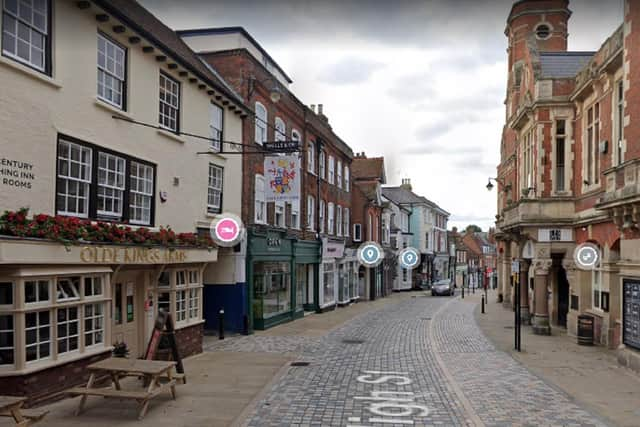Hemel Hempstead ranked amongst UK's most vulnerable post-Covid towns, councillors told
and live on Freeview channel 276
At a meeting of the county council’s growth infrastructure, planning and the economy cabinet panel on Thursday (February 4), councillors were told of research by KPMG.
That research – said Neil Hayes from the Local Enterprise Partnership – had studied more than 100 towns and cities from across the UK.
Advertisement
Advertisement
It had considered a range of factors, councillors were told, such as levels of remote working in an area and town centre footfall.


And, in the wake of the Covid-19 pandemic, he said, it had ranked Hemel Hempstead as the second ‘most vulnerable’ town in the country.
Nearby Watford, he said, had been ranked as the seventh most vulnerable nationally – with seven of the ‘top 10’ towns to feature in the list in the South East.
And Mr Hayes said the results of the study “had come as a bit of a surprise to a number of policy makers”.
Advertisement
Advertisement
He suggested there was an issue of ‘historic commuter belt towns’, that had previously had a lot of ‘footfall’ with people going to and from work.


And he suggested that continued remote working after the pandemic would lead to a reduction in footfall in those commuter towns.
These towns may not, he said, have the night-time economy or leisure and culture facilities offered by core cities in other parts of the country.
And this, he suggested, was accelerating the need to have town centre plans and some ‘visioning’ work.
Advertisement
Advertisement
Liberal Democrat Cllr Sandy Walkington said he was “surprised” to see the two Hertfordshire towns on the list of ‘vulnerable’ towns.
He pointed to previous reports that ‘losers’ were likely to be places like Canary Wharf, as more people continued to work remotely for part of the week.
And he suggested there may be future ‘opportunities’ for commuter towns, in terms of local retail, restaurants and gyms.
In response Mr Hayes said that the fundamental characteristics of the commuter belt were still strong, but may been to be reconfigured or re-purposed.
Advertisement
Advertisement
And he also suggested that if employees were only travelling into a central office one or two days a week, they may also choose to live much further away.
Cllr Mark Watkin, who represents the Nascot Park area of Watford, said he was “shaken” to find Watford was seventh on the list of most vulnerable towns.
He pointed to the towns ‘relatively vibrant’ retail situation, good night-time offer and culture.
And he asked if there was further clarification of how Watford had scored so badly in the survey.
Advertisement
Advertisement
Mr Hayes suggested the area lacked the sort of incubation facilities hat had grown in areas like Stevenage.
And he suggested that there were places like Watford and St Albans that if they could ‘pivot’ slightly could capture further opportunities.
“It means doing things slightly differently,” he said.
“But again, as you say, I think most of the component parts are there. It’s just changing, or recalibrating, some of those factors and focussing on some – like employment space and incubation – that haven’t really been featured in some of those plans to date.”
Meanwhile at the meeting Mr Hayes also highlighted the impact of the pandemic on the county’s creative sector – particularly the film and tv.
Advertisement
Advertisement
He said output in October (2020) in film and tv production was 20.8 per cent lower than it had been before the impact of the pandemic, in February 2020.
However he pointed to anecdotal evidence that now suggested that production levels had increased, as streaming activities began to grow.
And he said there was still a demand for studio space in the county.
He reported that there had been a number of demands from agents in the last few weeks, although he said that the county had been unable to supply some of the size of sites they were looking for.